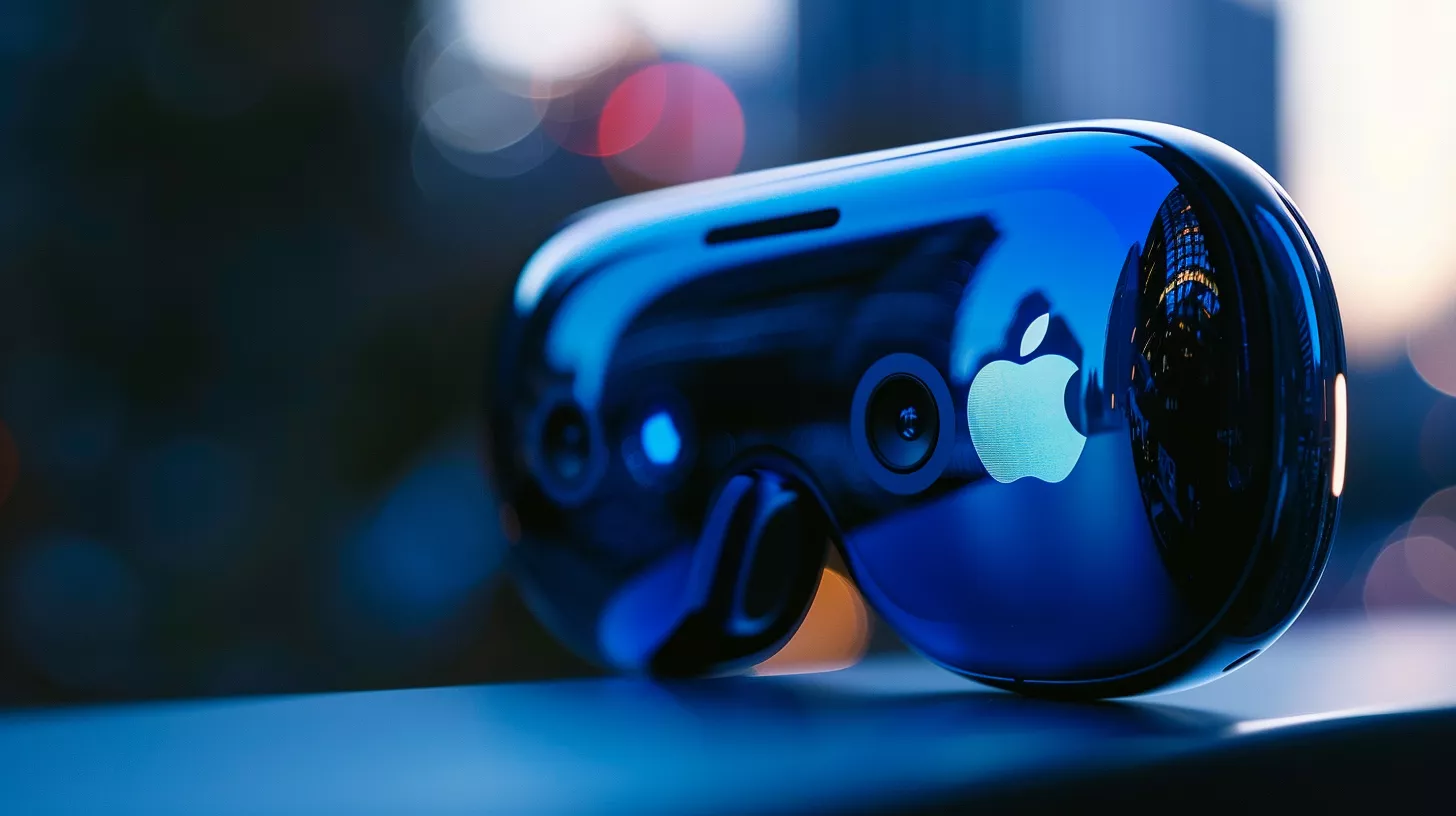Table of Contents
Introduction
Apple is reportedly extending its AI capabilities beyond the already announced Apple Intelligence for iPhone, iPad, and Mac, with plans to bring these features to the Vision Pro headset. As reported by Bloomberg’s Mark Gurman, this development aligns with Apple’s broader strategy to embed AI across its product ecosystem, enhancing user experiences through sophisticated features like improved Siri, advanced proofreading tools, and custom emojis.
The Expansion of Apple Intelligence
Apple Intelligence represents a suite of AI-powered features designed to elevate user interactions across Apple’s devices. Initially introduced for iPhones, iPads, and Macs, these capabilities include:
- Enhanced Siri: Offering more natural and context-aware responses.
- Proofreading Tools: Assisting users in editing and refining text.
- Custom Emojis: Allowing for personalized expressions in digital communications.
AI to the Vision Pro: A Logical Progression
Integrating AI into the Vision Pro is a natural extension of Apple’s AI initiatives. As Apple Intelligence is set to play a crucial role in the company’s future, incorporating these features into the Pro aligns with Apple’s vision of creating a seamless, intelligent ecosystem across its devices.
Why AI to the Vision Pro Makes Sense
- Unified User Experience: Bringing Apple Intelligence to the Pro ensures a consistent experience for users across all Apple devices. Features like enhanced Siri and custom emojis can provide familiar functionality in a new AR/VR context.
- Enhanced Functionality: AI capabilities can make the Vision Pro more versatile and user-friendly, supporting advanced interaction methods such as gesture recognition and contextual voice commands.
- Future-Proofing: As AI continues to evolve, its integration into the Pro could pave the way for more advanced applications, positioning the device as a key player in the future of mixed reality.

Challenges of Integrating AI into Mixed Reality
Although bringing AI to Pro offers numerous benefits, it also presents unique challenges. Unlike traditional devices, the Vision Pro operates in a mixed-reality environment, requiring a different approach to AI integration.
Rethinking AI Features for Mixed Reality
- Adapting Interfaces: AI features designed for flat screens must be reimagined for a 3D, immersive environment. This involves creating intuitive, spatially aware interfaces that work seamlessly in mixed reality.
- Performance Optimization: The computational demands of AI can impact the Vision Pro’s performance and battery life. Efficient algorithms and hardware optimization are crucial to maintaining a smooth user experience.
- User Interaction: AI interactions in mixed reality must account for different input methods, such as hand gestures and eye movements, making the design of these features more complex than for traditional screens.
Enhancements to Vision Pro Demos
As part of its efforts to boost Pro sales, Apple is making significant changes to how it demos the headset in stores. These enhancements include:
- Personal Media Viewing: Potential buyers can now view their personal media on the Pro, providing a more personalized and compelling demo experience.
- Comfort Improvements: Apple is transitioning from the Solo Loop headband to the Dual Loop design, offering improved comfort for extended use.
Future AI Integration with Vision Pro
AI integration in the Pro isn’t expected to launch this year, according to Gurman. Apple is focused on ensuring that these features are well-suited to the mixed-reality environment before rolling them out. This deliberate approach underscores Apple’s commitment to quality and user experience.
Anticipated AI-Enhanced Features for the Vision Pro
Advanced Spatial Audio
Analyst Ming-Chi Kuo suggests that Apple is planning to mass-produce AirPods with infrared cameras by 2026. These AirPods are expected to support new spatial audio experiences and gesture controls when used with the Vision Pro. AI could play a crucial role in enhancing these capabilities, making audio interactions more immersive and intuitive.
Gesture and Voice Interaction
AI will likely improve the Vision Pro’s gesture and voice recognition, making it easier for users to navigate and interact with AR content. Advanced machine learning algorithms can interpret complex gestures and natural language commands, providing a more seamless and intuitive user experience.
Environmental Awareness
AI can enable the Vision Pro to understand and adapt to the user’s surroundings, creating a more context-aware AR experience. This could involve recognizing objects and surfaces in the environment, allowing the Vision Pro to overlay virtual elements more accurately and realistically.
Conclusion
The integration of AI into the Vision Pro represents a significant step forward for Apple’s AR/VR ambitions. By extending Apple Intelligence to this cutting-edge headset, Apple is poised to enhance the Vision Pro’s capabilities, making it more versatile, user-friendly, and immersive. While challenges remain in adapting AI features for a mixed-reality environment, Apple’s deliberate and innovative approach suggests a promising future for AI-enhanced AR experiences. As the Pro evolves, the addition of AI could redefine how users interact with and perceive digital content, solidifying Apple’s leadership in the realm of augmented and virtual reality.